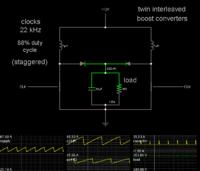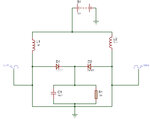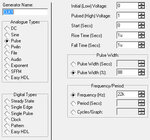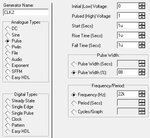A
ankushl
Guest
Hello...i am attempting to design a boost converter for the first time...what i need to do is boost the voltage from 12VDC to 240VDC with 1.5A...is this possible? or do i need to have an input dc voltage of at least 24VDC. I referred to the circuit from Rashid's Power Electronics Handbook...in the book, instead of a mosfet that i have used, is a simple spst switch with a diode value of D=0.5. I used a load value of 160 ohms. I am not able to understand how to choose the value of the diode and the switch parameters...the remaining component values i used as default from the text book. I understand that I have to use the equations to determine the values of components to be used. Also, the above circuit is for a PWM boost converter, I do not need PWM and the circuit is supposed to be for continuous conduction mode operation...I am a newbie, so please bear with me...is there any other circuit i could use? Please help...thanks






